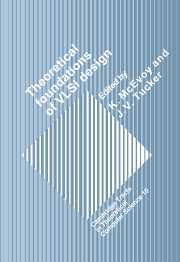9 - Superpolynomial lower bounds on monotone network complexity
Published online by Cambridge University Press: 06 November 2009
Summary
ABSTRACT
Combinational networks are a widely studied model for investigating the computational complexity of Boolean functions relevant both to sequential computation and parallel models such as VLSI circuits. Recently a number of important results proving non-trivial lower bounds on a particular type of restricted network have appeared. After giving a general introduction to Boolean complexity theory and its history this chapter presents a detailed technical account of the two main techniques developed for proving such bounds.
INTRODUCTION
An important aim of Complexity Theory is to develop techniques for establishing non-trivial lower bounds on the quantity of particular resources required to solve specific problems. Natural resources, or complexity measures, of interest are Time and Space, these being formally modelled by the number of moves made (resp. number of tape cells scanned) by a Turing machine. ‘Problems’ are viewed as functions, f : D → R; D is the domain of inputs and R the range of output values. D and R are represented as words over a finite alphabet Σ and since any such alphabet can be encoded as a set of binary strings it is sufficiently general to consider D to be the set of Boolean valued n-tuples {0, 1}n and R to be {0,1}. Functions of the form f : {0, 1}n → {0,1}, are called n-input single output Boolean functions. Bn denotes the set of all such functions and Xn = (x1,x2, …, xn) is a variable over {0, 1}n.
- Type
- Chapter
- Information
- Theoretical Foundations of VLSI Design , pp. 403 - 438Publisher: Cambridge University PressPrint publication year: 1990
- 1
- Cited by

